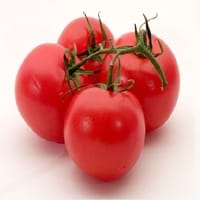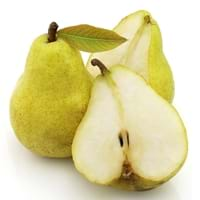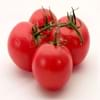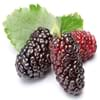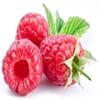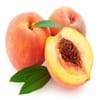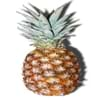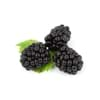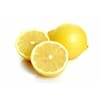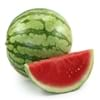Health Benefits
Anti depressant, Cancer prevention, Heart care, Muscle pain relief, Prevents constipation, Regulation of heart rate, Weight loss properties
Arthritis prevention, Cancer prevention, Gout treatment, Heart care
General Benefits
Controls blood pressure, Eye care, Maintains healthy cholesterol level, Strengthens bones
Anti-inflammatory properties, Boosts immune system, Controls blood pressure, Controls blood sugar levels, Cures fever, Digestive aid, Sore throat treatment
Skin Benefits
Anti-aging benefits, Heals sunburn, Skin rejuvenation, Treatment of acne, Treatment of skin diseases
Reduces wrinkles, Treatment of acne
Hair Benefits
Good conditioner, Prevents hair loss, Softening mask
Promotes longer and healthier hair, Shiny hair
Allergy Symptoms
Anaphylaxis, Coughing, Diarrhea, Eczema, Hives, Itching sensation in throat, Nausea, Skin Rashes, Runny nose, Sneezing, Swelling of mouth, tongue or lips, Vomiting, Wheezing
Anaphylaxis, Digestive Problems, Itching, Skin Rashes, Swelling
Side Effects
Heart burn
Allergic reaction
Best Time to Eat
Along with meal, Don't consume at night and before bed, Morning time (before lunch)
As a snack in the late afternoon, Don't consume at night and before bed, Eat the fresh ones, avoid mixing with any other foods, don't eat after meal., Morning time (before lunch)
Vitamin B5 (Pantothenic Acid)
Vitamin C (Ascorbic Acid)
Vitamin K (Phyllochinone)
Calories in Fresh Fruit with Peel
Calories in Fresh Fruit without Peel
Not Available
Not Available
Calories in Frozen Form
Not Available
Calories in Dried Form
Not Available
Calories in Canned Form
Not Available
Type
Berry, Fruit vegetable
Tree fruit
Season
All seasons
Autumn, Summer, Winter
Varieties
Better Boy, Early Girl, Beefsteak, Beefmaster, Pink Brandywinem, Caspian Pink, Thai Pinks, Hawaiian Pineapple, Kellogg’s Breakfast, Cherokee Purple, Black Ethiopian and Paul Robeson
Green Anjou, Red Anjou, Bartlett, Red Bartlett, Bosc, Comice, Concorde, Forelle, Seckel and Starkrimson
Color
Green, Orange, Pink, Purplish black, Red, White, Yellow
Yellow
Taste
Sour, Sweet
Crunchy, Sweet
Origin
Central America, South America
China, Japan
Soil Type
Loam, Sandy loam
Clayey, Loamy, Sandy
Climatic Conditions
Sunny, Warm
Cold, Hot, Without frosts
Facts about
- Around 10,000 varieties of tomatoes are grown in the world.
- In Buñol, people celebrate the Tomatina festival where around 1.5 lakh tomatoes are used.
- As per Guinness book of records, heaviest tomato weighed 3.51 kg.
- The first pear tree was planted in North America in 1620.
- The Chinese considered the pear fruit to be a symbol of immortality.
- This fruit was used as a natural remedy against nausea in ancient Greece.
Other Countries
Brazil, Egypt, India, Iran, Italy, Mexico, Spain, Turkey, United States of America
Argentina, Belgium, India, Italy, Japan, South Africa, Spain, Turkey, United States of America
Top Importer
Nigeria
Europe
Top Exporter
Netherlands
China
Botanical Name
Solanum lycopersicum
Pyrus communis
Synonym
Lycopersicon esculentum
Not Available
Subkingdom
Tracheobionta
Tracheobionta
Division
Magnoliophyta
Magnoliophyta
Class
Magnoliopsida
Magnoliopsida
Subclass
Asteridae
Rosidae
Family
Solanaceae
Rosaceae
Species
S. lycopersicum
P. communis
Generic Group
Nightshade
Rose
Difference Between Tomato and Pear
We might think that Tomato and Pear are similar with respect to nutritional value and health benefits. But the nutrient content of both fruits is different. Tomato and Pear Facts such as their taste, shape, color, and size are also distinct. The difference between Tomato and Pear is explained here.
The amount of calories in 100 gm of fresh Tomato and Pear with peel is 18.00 kcal and 57.00 kcal and the amount of calories without peel is Not Available and Not Available respectively. Thus, Tomato and Pear belong to Low Calorie Fruits and Low Calorie Fruits category.These fruits might or might not differ with respect to their scientific classification. The order of Tomato and Pear is Solanales and Rosales respectively. Tomato belongs to Solanaceae family and Pear belongs to Rosaceae family. Tomato belongs to Solanum genus of S. lycopersicum species and Pear belongs to Pyrus genus of P. communis species. Beings plants, both fruits belong to Plantae Kingdom.
